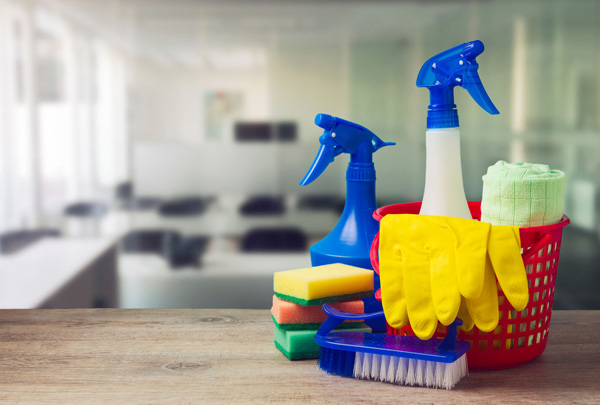
Tenants and occupants are more and more beginning to expect that the buildings in which they work will follow sustainability best practices.
In fact, the USGBC can put a number on this demand: LEED-certified buildings can rent out for up to 20 percent higher than average.
But LEED certification isn’t the only way to clean up a facility’s act. Plenty of FMs have discovered that small changes go a long way toward reducing a facility’s environmental impact. Some of those changes can be as simple as swapping out a line item on your budget.
Here are three very simple changes that your facility can make today to become more eco-friendly.
Change Your Bathroom Supplies
One of the first areas that you should look at when trying to make your company more eco-friendly is the one that most people think of last: the bathroom. There are many areas in a bathroom that actually have a very negative impact on a building’s carbon footprint.
One way you can lessen this impact is to replace all of your paper towel dispensers with air-dryers. Leslie Guevarra at GreenBiz says paper towels, even 100 percent recycled ones, are one of “the worst hand drying systems in terms of environmental impact” because once we use them they are thrown in the garbage and taken to a landfill.
However, not all air-dryers are eco-friendly.
There are certain types of air-dryers that leave larger carbon footprints. Consumer affairs reporter Rebecca Smithers says “warm air hand dryers were found to generate 70 percent more carbon emissions than the newest technology.”
The best type of hand dryer to use, according to Green Lodging News’ Glenn Hasek, is the Dyson Airblade hand-dryer. The Dyson Airblade is the most eco-friendly hand dryer in the world, as it produces up to 79 percent less CO2 than other hand-dryers, and up to 76 percent less CO2 than recycled paper towels.
Another way your facility can make eco-friendly changes in its bathrooms is to replace all of the regular toilets with low-flow toilets. Green consumer expert Diane MacEachern says that normal toilets waste about 6 gallons of water per flush and about 120 gallons per day. Low-flow toilets, on the other hand, only use 1.6 gallons with each flush, which wastes less water and makes these toilets much more eco-friendly.
Another area to look at when making the decision to become more eco-friendly is toilet paper. The first way this can be done is to use recycled toilet paper. Some people might raise an eyebrow to this idea, but Grist’s Sarah van Schagen conducted an experiment that found some of the brands of recycled paper were more pleasant to use than the non-recycled toilet paper. She highly recommended Seventh Generation double rolls as one of the most pleasant.
Also, you can replace toilet paper with the tubes with toilet paper rolls that are tubeless. The Scott toilet paper website says more than 17 billion toilet paper tubes are used and end up in landfills instead of being recycled each year. That’s a lot of waste that can be done away with.
Just changing these three things in your company’s bathrooms could drastically help cut back your facility’s carbon footprint.

Switch Your Cleaning Supplies
Next, look to the cleaning products your facilities and janitorial teams use every day, as well as the cleaning companies your facility might outsource to. After all, why use cleaners with harsh chemicals when you can use eco-friendly ones?
Carol Ruth Weber says that most cleaners are made of “harsh cocktails of chemicals, which can be bad for your health.” She says eco-friendly cleaners are safer for people to use, and that they don’t release harmful chemicals into the air, as regular cleaners do.
Think again about your bathrooms. Because bathrooms are enclosed areas, any harmful chemicals could stay trapped in there longer. In addition to this, AustinMaidService.com writer Kyle Sanders says that this healthier environment make occupants feel better, which therefore helps them feel happier and more productive.
Karen Peltier at TheSpruce.com says eco-friendly cleaners can be less expensive, too, because you can use them to clean up several types of messes. Chemical cleaners are made for (or at least marketed for) one specific use, which forces you to buy several different cleaners for every imaginable application.
And if you outsourcing cleaning and janitorial duties, look for a service that advertises itself as eco-friendly. According to Western National Property Management, an eco-friendly cleaning service will take actions such as recycling water instead of wasting it and safely sterilizing waste bins.

Offer Organic Food In Your Employee Cafeterias
Another way to lessen the carbon footprint that your building leaves is to push for organic food in your employee cafeterias. This change will not only benefit the environment, but also the health of your building’s occupants.
Eostre Organics says “the facts remain that organic food production eliminates soil and water contamination, helps preserve local wildlife, helps conserve biodiversity, helps the fight against global warming, and reduces erosion.” Therefore, by switching to organic food instead of processed food, your facility will be helping to conserve the planet’s resources (and might inspire others to follow your example).
For instance, the Google campus serves organic foods in its company cafeterias, and according to Bloomberg’s Tim Catts, employees reporting feeling better when they eat it. That makes for productive employees after lunchtime.
Additionally, push to get your cafeteria’s organic food from local suppliers whenever possible. According to Laura Newcomer at Greatist, buying food locally cuts down on carbon emissions into the air, as it doesn’t have to be shipped as far.
If your facility implements any one of these three suggestions, you could potentially decrease its carbon footprint significantly, helping owners, tenants and the planet as a whole.
Credits:
amasterpics123/©123RF Stock Photomaglara/©123RF Stock Photo
sommai/©123RF Stock Photo

